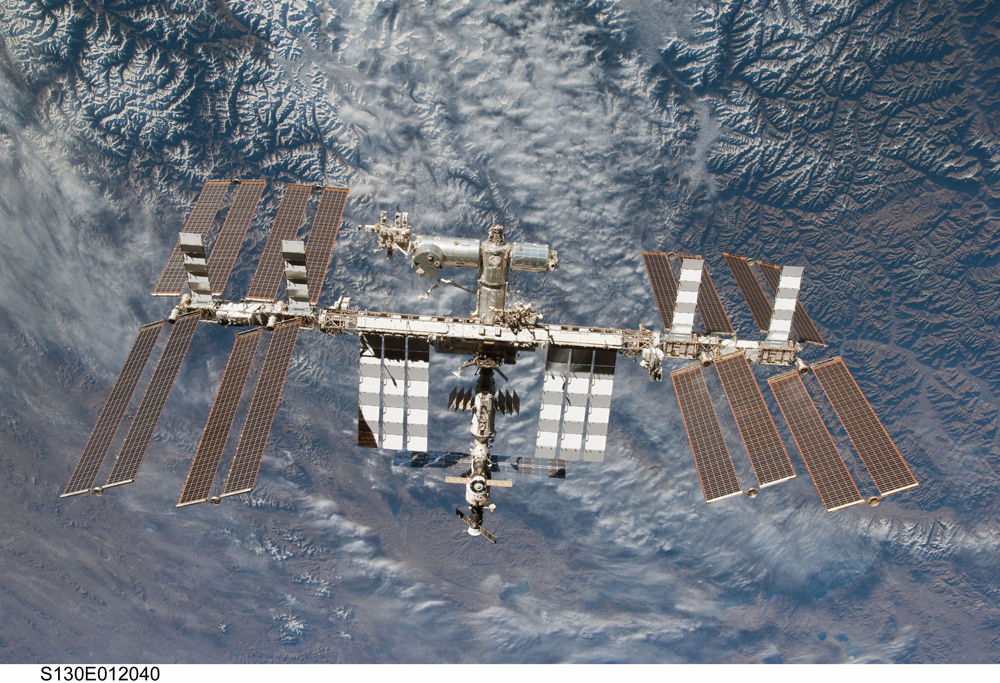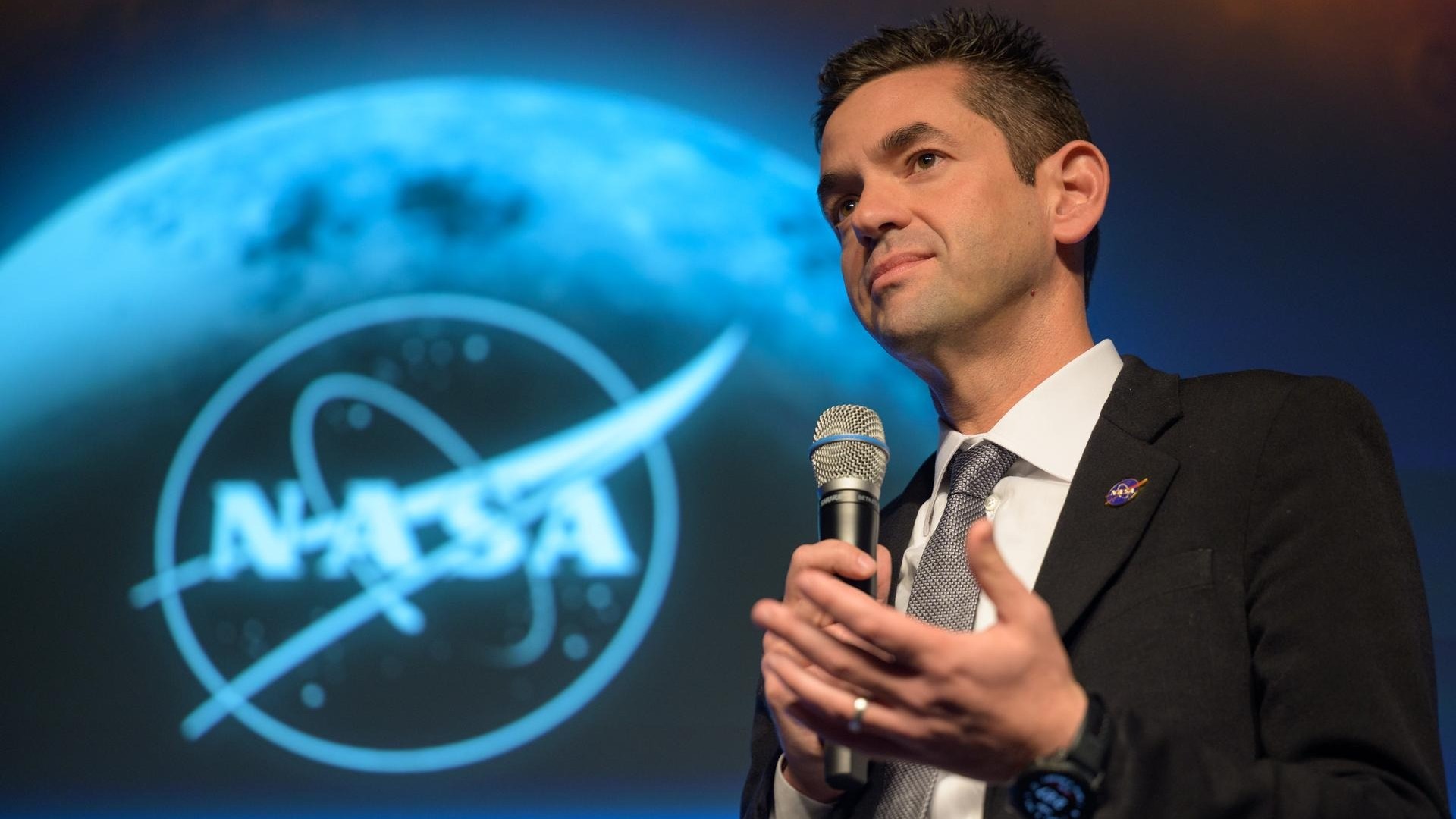NASA Considers New Uses for $100 Billion Space Station

NASA and its international partners are discussing new options for the International Space Station, including innovative ways to use the $100 billion orbiting laboratory as a testing ground for technologies to help future deep space exploration.
The space station's Multilateral Coordination Board, which is made up of representatives from the space agencies that built the orbiting lab, examined potential technology initiatives that could support voyages to an asteroid or Mars, or could be used in the development of lunar habitats.
The coordination board discussed those options in a meeting yesterday (July 26) and also reviewed plans to ramp up use of the station now that its 13-year construction is complete. The officials also evaluated efforts to standardize systems and operations at the outpost, including plans for a standard spaceship docking system. [Photos: Building the International Space Station]
The station's Multilateral Coordination Board includes senior representatives from NASA, the Canadian Space Agency, the European Space Agency, the Russian Federal Space Agency, and the Japanese Ministry of Education, Culture, Sports, Science and Technology. The board meets periodically to ensure coordination of station operations and activities among the partners.
Currently, NASA and its international partners plan to continue operating the space station through at least 2020. [Infographic: The International Space Station Inside and Out]
Scientific and technological research is an ongoing part of life aboard the space station. Here are some examples of the work that has been done, and is continuing to be done, at the orbiting laboratory:
- Using the International Space Station as a national laboratory is expanding. Memorandums of understanding are in place between NASA and other U.S. government agencies, such as the National Institutes of Health, which is now in its second year of selecting experiments for research in microgravity related to human health.
Space Act Agreements also allow private firms and universities to conduct research in areas like vaccine development, gene differentiation, plant studies and advanced propulsion technologies.
Breaking space news, the latest updates on rocket launches, skywatching events and more!
Earlier this month, NASA formally selected the Center for the Advancement of Science in Space, a nonprofit organization, to stimulate, develop and manage uses of the station by organizations other than NASA on the American segment of the outpost.
- The Alpha Magnetic Spectrometer, which was delivered and installed on the station by a visiting space shuttle crew in May, has already collected more than 2 billion observations of galactic cosmic rays. The astrophysics instrument represents a partnership of hundreds of scientists from sixteen countries, led by Nobel laureate Samuel Ting.
- Robotic technologies developed by the Canadian Space Agency (CSA) for the station have been used to improve the dexterity of surgeons on Earth in fine scale surgery. In the coming months, NASA will be testing a humanoid robot assistant, called Robonaut 2, that was developed in partnership with General Motors. Furthermore, an experiment to test the ability to robotically refuel satellites in orbit was launched earlier this month onboard the final space shuttle flight – Atlantis' STS-135 mission.
- The space station partnership is working to share data from remote sensing instruments mounted on the orbiting outpost and to increase the application of such data for use in disaster response. For example, the Hyperspectral Imager for the Coastal Ocean has collected more than 3,510 images, providing unprecedented spectral resolution of difficult-to-map coastal waters. The International Space Station Agricultural Camera snapped its first pictures on June 10. Its data is used to assess crop health and rapid changes during the growing season.
- NASA's studies of their astronauts' health during long duration stays on the station have identified relationships between diet and bone loss that offer important insights for ongoing and future research.
Recently published data on chemical changes in pharmaceuticals identified that low-dose ionizing radiation in orbit degrades many medications, indicating the need to develop more space-hardy medications for future human spaceflight beyond low-Earth orbit.
- The Russian Federal Space Agency, or Roscosmos, continues experiments aimed at human adaptation to future long-duration expeditions. Effects of the flight conditions on the cardiovascular system, the respiratory system and bones are being investigated in a series of dedicated medical experiments. Wheat and vegetables are being planted, followed by genetic, microbiological and biochemical tests of the plant. Four different long-duration Russian astrobiology experiments were also returned after spending two years exposed to the environment of space.
- In addition to astronomical and Earth observations, Japan promotes biotechnological research by analyzing structures of high-quality protein crystals grown on the station that have led to treatments for muscular dystrophy. Japan also continues experiments related to future long-term human spaceflight missions, such as investigating bone loss, the effects of radiation and countermeasures of those. Scientists have also gained insight into fields of fundamental life and materials science from research conducted in the Japanese Kibo laboratory.
- Educational activities on the station reach thousands of students around the world. In May and June, hundreds of thousands of students watched the adaptation of spiders to a space environment and compared their behavior to spiders in classrooms on Earth through the website BioEdOnline.org. The spiders returned to Earth on the shuttle Atlantis when it landed for the final time on July 21.
Construction of the International Space Station began in 1998, with five space agencies representing the 15 countries that designed and built the orbiting lab. The station's backbone-like main truss is as long as a football field, making it the largest spacecraft ever built. The orbital complex consists of 13 rooms and is typically home to a six-person crew.
With NASA's space shuttle fleet retired, the U.S. space agency plans to rely on its international partners to deliver crews and cargo to the space station until new privately built spaceships become available.
Russian Soyuz spacecraft have routinely ferried astronauts and cosmonauts to and from the space station since 2001, when the first crew took up residence. Unmanned robot cargo ships from Russia, Japan and Europe also make regular delivery flights to the orbiting lab.
NASA has contracts with two private spaceship builders, Space Exploration Technologies (SpaceX) and Orbital Sciences Corp., to build and launch robot cargo ships to ferry U.S. supplies to the space station. The first of those flights could occur by December of this year, NASA officials have said.
Follow SPACE.com for the latest in space science and exploration news on Twitter @Spacedotcom and on Facebook.

Space.com is the premier source of space exploration, innovation and astronomy news, chronicling (and celebrating) humanity's ongoing expansion across the final frontier. Originally founded in 1999, Space.com is, and always has been, the passion of writers and editors who are space fans and also trained journalists. Our current news team consists of Editor-in-Chief Tariq Malik; Editor Hanneke Weitering, Senior Space Writer Mike Wall; Senior Writer Meghan Bartels; Senior Writer Chelsea Gohd, Senior Writer Tereza Pultarova and Staff Writer Alexander Cox, focusing on e-commerce. Senior Producer Steve Spaleta oversees our space videos, with Diana Whitcroft as our Social Media Editor.
